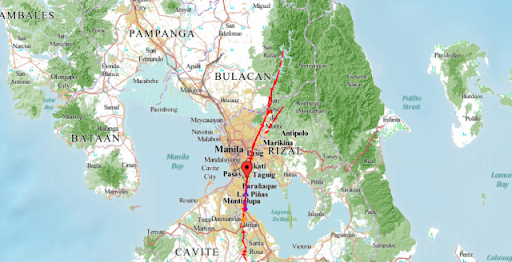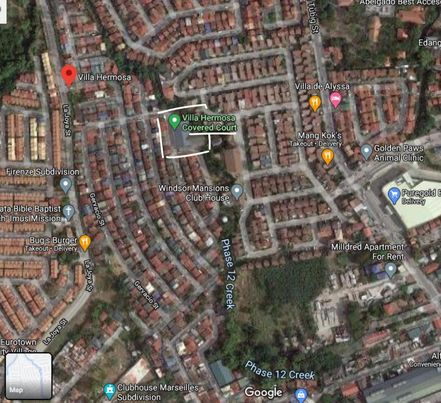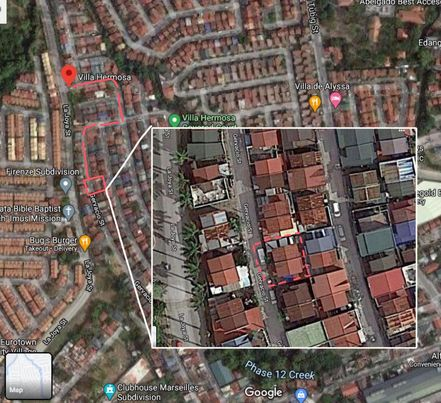Introduction
According to the National Geographic site, the Philippines rests on the Pacific Ring of Fire. The shaking has made the Pacific Ocean’s crust divide underneath the continents, resulting in striking the country regularly with a magnitude of 7.2 earthquakes that had killed 222 residents.

The Philippines is also most likely known to have about 300 volcanoes. The Pacific Ring of Fire otherwise called the “Circum-Pacific Belt” is roughly about a 40,233-km chain of volcanoes and earthquake activity around the Pacific Ocean. With this, these tectonic plates are constantly pushing, sliding, and colliding with one another, as well as moving beneath or underneath. The outcome that activates is deep ocean trenches, volcanic eruptions, and earthquakes. Fault lines are activated when tremors usually occur along the boundaries where the plates meet. (according to gulfnews.com)
Emergency plans are very much likely important for us to be ready, prepared, and more aware when an unexpected or any disaster may occur.
My village requires these kinds of information for us to take action to any disaster that might happen, bringing important needs, evacuating safely and that is when we know about disaster preparedness comes in for our and others safety.
Individuals including families in this barangay know how to prepare for safety however they don't cooperate as a whole community. I'm hoping this may help and coordinate with each other. During the past 30 days, the Cavite was shaken by 3 quakes by the magnitude of 3.0 or above 35 quakes between 2.0 and 3.0. And some quakes were about below magnitude 2.0 which we didn't feel.
About the Earthquake
Imus would be involved in this sense as it is part of the province of Cavite. Coming from my experience, the biggest I have felt, made the ground shake and the furniture nudged more than a centimeter away from its original placement, also felt a bit of dizziness but I have seen the vans and vehicles shake itself and I can see how strong it is.
An earthquake happens when two blocks of the earth suddenly pass one another. The surface when they slip is called fault or fault plane. Epicenter is where below the earth’s surface where it started and it sometimes has foreshocks: these are smaller earthquakes that happen in the same place as the big one follows.

The earthquake has four major layers, the inner core, outer core, mantle, and crust. The crust and the top of the mantle make up a thin skin on the surface of the earth. The skin is made up of many pieces like a jigsaw puzzle covering the surface and the puzzle pieces keep moving around, sliding, or bumping to one another and these are called tectonic plates.
The plates are called plate boundaries and it's made up of many faults and most of the earthquakes around the world occur on the faults. Since the edges are rough, most of it got stuck and the rest will keep on moving, and now when the plates moved far enough the edges unstick on one of the faults and now that is how an earthquake is made.
Since earthquakes cannot be predicted, neither scientist themselves proved it impossible. Therefore the use of magnitude scales tells how high or how much of the impact in an earthquake.

Discussion of the Problem
Cavite is also in the top ten provinces in the Philippines that are prone to earthquakes. Taal volcano is also one of the main causes of an earthquake and there's nothing for us or the government to prevent the earthquakes from happening because it is a natural disaster and not a man-made disaster. Disasters like this can occur other disasters such as landslides and tsunamis, however, tsunamis rarely happen here because of the trenches and offshore faults, people who live near mountains or bodies of water are most likely to be highly in danger and in need to evacuate as soon as possible to get onto safety.
Mitigation
In Cavite, about 85% of the land is prone to ground shaking in an earthquake of the year2018 with a magnitude of 7.2, they decided to prepare soon for the “Big one”. The province is one of the top ten densely populated provinces in the Philippines and has a population of around 3.7 million.

By means, Cavite is likely to have a dense prone to earthquakes. Nowadays people tend to struggle in this pandemic year let alone earthquake strikes as well. Last year august a magnitude of 6.6 struck in Masbate, resulting in one died, many injured, and several structures. The Office of Civil Defense (OCD, partnership with Department of Scientist and Technology-Philippine Institute of Volcanology and Seismology (DOST-PHIVOLCS), and Department of the Interior and Local Government (DILG) shared ways and tips to stay safe during a disaster as well as the pandemic. DOST Undersecretary Renato Solidum Jr. (Phivolcs Office-in-Charge) stated that earthquake evacuation should be stay-at-home order when it happens. He also stated to:
Most residents here only tend to remain in their homes despite the stability of their houses when the shake occurs. Hence mountain and near ocean residents are at such big risks because the place surrounding their homes may affect to cave in.

Residents also tend to panic and people with any mental disabilities may trigger them, make sure to know ways to calm them down. And report any emergency issues if needed.
Structures like these to prevent the roof from collapsing or any structure to collapse (given example: shelves are supported by shelf brackets that are L-shaped metals fastened by the wall. But think of it 20x bigger like this image here.)
PHIVOLCS (Philippine Institute of Volcanology and Seismology) has conducted training for the participants (some participants were from Imus, Cavite) and that goal aims to familiarize the participants and help them to determine the possible impacts in the given disaster scenarios. It's a big help for the participants to prepare and plan accordingly, even plan further ahead in any future disasters to ensure the safety of everyone.

The common mitigation things to prevent getting injured from the earthquake:
ALWAYS prepare an aid kit when any disasters occur
Preparedness
Next, the most important thing for us to know is to be prepared and have the needs whenever there are any disasters. This also needs to have more than enough resources for us to have this preparation in the future and so that we don't have to rely on or worry about anyone to assist. All of us need to be prepared from our equipment to being knowledgeable and lastly having medical needs. Before we head onto that you need to know what to do before, during, and after an earthquake.
What to do Before, During, and After Earthquakes
Before Earthquakes
During Earthquakes
After Earthquakes
Supplies
Health
First-aid Kit (the most and main important equipment in any disasters)
The most important tool to ensure that major and regular injuries may be taken care of efficiently. This assists any medical worker before they arrive to take care of the rest of the problem. This includes:



Water
One of the most important supplies to stay hydrated always, bringing water jugs/bottles or supplies on batches of water.
Own food utencils
Having your utensils especially in a pandemic is a must as everyone cannot share belongings to be safe especially sanitary on food.
Food supply
With non-perishable food that only lasts for at least three days such as instant noodles, snack bars, biscuits, cookies, canned tuna, and also meat, spam, vegetables, snacks like chips, sweet corn, etc.
Knowledge
Knowing how to treat your injuries or others’ for example: stopping the bleeding and treating any regular injuries such as scratches, scabs, and open wounds. Keeping calm during the disaster must be practiced. It's okay to panic but most of the time we need to remain calm so that the situation can be handled safely.
Communications
During these tragedies, we need equipment to communicate and to inform other people.
A whistle, radio, megaphones, and gadgets like social media to share help and communicate to other people (and also charged power banks for battery supply in gadgets).
Personal supplies
Walkie-talkie or a battery-generated radio for getting information, laser/flashlight, and a pocket knife for necessary situations.
Evacuation
Common Evacuation
Covered courts/ evacuation centers in this village might not be enough for all the residents and may not be accompanied/ assisted by barangay officials. Therefore, They still need the knowledge to be prepared to avoid any risks during any disasters.
Residents in every family should know how to evacuate from their homes safely. Including any disasters that may occur on what to do and following safety protocols during the evacuation.


Required evacuation
Since there’s only one Evacuation route in my village, it’s needed to move out of their homes safely when it is necessary to do so, acquired by the barangay facilitators.
While evacuating its important to do covid health protocols.
Response
The responders
The barangay facilitators will assist all of the people in this subdivision to evacuate when it's the worst. Residents will be allowed to return to their homes once the disaster is over.
The medical team whether what emergency number you enter will answer you as soon as possible to get immediate help for injured people.
Building facilitators

They are the ones who may fix any damages to any care centers that may be repaired or replaced by earthquake-proof materials so that there won't be any future damage to care center areas/buildings.
Basic goods and needs
Other supplies and equipment are frequently prepared when disasters come in, even for future disasters.
Outside countries that aren't affected or other places outside Cavite donating relief goods are the biggest help for the people in need.
Recovery
Engineers are the people who will renovate damaged structures or houses in the aftermath of any disasters for the people who are affected.
Replacing frames/ any other structures into stable and heavy-duty ones such as windows, doors, etc. may help the entire structure to collapse less. It may not be the permanent solution but it did not make anything more dangerous in the upcoming natural and man-made disasters.
Spreading the news about the aftermath on any social media platforms or even the news itself for the people to be aware of and giving condolence for the others who are affected and lost their lives in the process of the disaster.
Donating money to physical facilities, charities, or online will also be such a big help, again for the people in need.
Conclusion
Creating an emergency plan is a must to have in each house of our community as our country is researched to be one of the countries in Asia to experience tons of natural events every year. Remember that natural disasters can happen anytime creating an impact on us for the natural disaster to adjust to being prepared. Lastly, each one of us should practice how to act fast to avoid any minor or major injuries, be independent, stay calm and focus and call for help if necessary.
